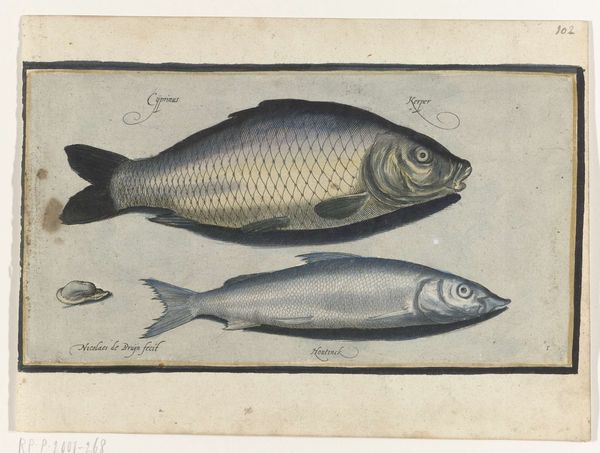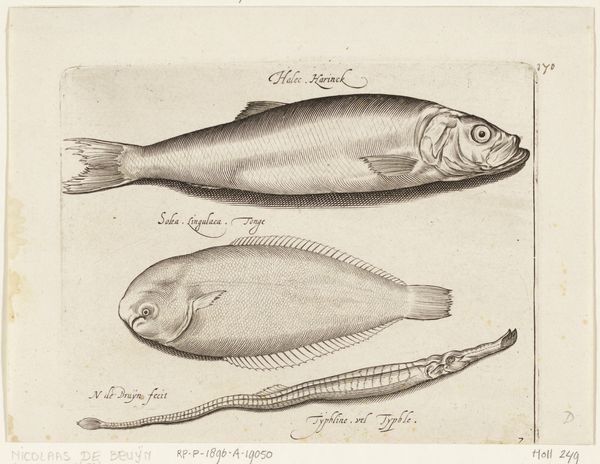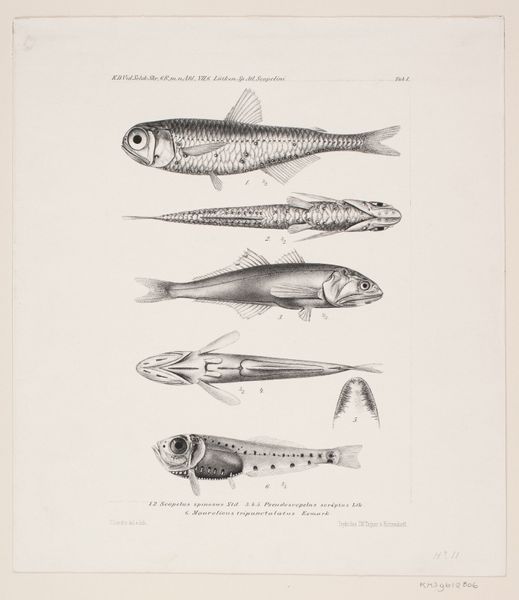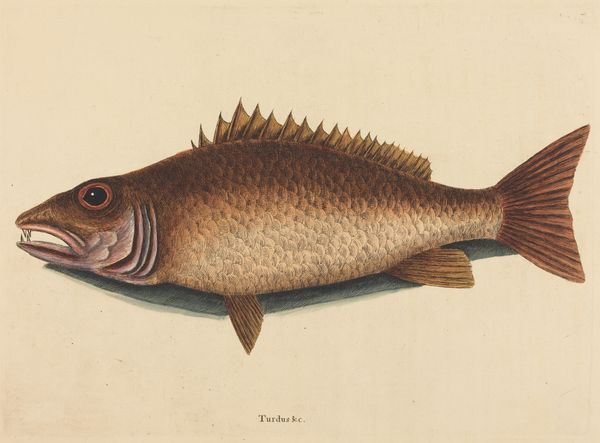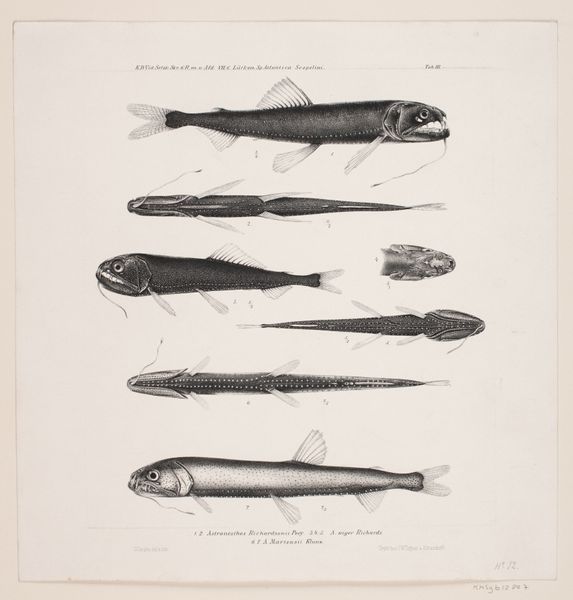
print, watercolor
# print
#
oil painting
#
watercolor
#
animal portrait
#
watercolour illustration
#
naturalism
#
watercolor
Dimensions: plate: 26.7 x 36 cm (10 1/2 x 14 3/16 in.) sheet: 31.9 x 44.9 cm (12 9/16 x 17 11/16 in.)
Copyright: National Gallery of Art: CC0 1.0
Mark Catesby made this print of barracudas sometime before his death in 1749. Catesby was an English naturalist who traveled extensively in the American colonies, documenting the flora and fauna he encountered. These images weren't just scientific records. They also catered to a growing European fascination with the natural world of the Americas. Catesby’s prints, like this one, fed into a colonial mindset. They presented the natural resources of the Americas as ripe for exploitation. Consider the careful detail with which Catesby renders each scale and fin, emphasizing the potential for precise classification and control. The very act of naming and categorizing these species was a way of asserting dominion over them. To fully understand this print, we can look at the scientific literature of the period. We can also examine the economic and political forces driving European expansion into the Americas. By doing so, we can start to unpack the complex relationship between art, science, and colonialism in the 18th century.
Comments
No comments
Be the first to comment and join the conversation on the ultimate creative platform.


